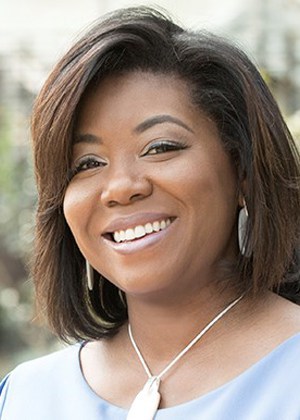
BizTimes associate editor Lauren Anderson recently spoke with Angela Adams, vice president of community relations for Goodwill Industries of Southeastern Wisconsin, about the organization’s D&I strategy.
BizTimes: Why did Goodwill sign the Region of Choice pledge?
Adams: “About four years ago, Jackie Hallberg, our CEO, really had a vision around Goodwill engaging across our communities that make up our territory at the ground level. … What we aspire to have is a strategy where diversity, inclusion and equity is seamlessly woven into the work of Goodwill. It’s who we are, it’s what we do and it’s how we desire to show up. Goodwill is largely known for the work that we do in supporting individuals with different abilities. We’ve become a thought leader in that space and a sought-after organization to support that space because years ago the organization made a very intentional effort. … Before there were a number of resources available to support individuals with disabilities, Goodwill raised its hand. … But we also serve a number of individuals who are from underserved populations and, while that population is very diverse and spans all types of cultural backgrounds, it’s predominantly people of color.”
“For four years we have been very intentionally learning, meeting with community organizations who also serve those constituents, building relationships and really seeking to understand what the greatest need is, who we are authentically as a workforce development organization and where we could plug in so that individuals from communities of color understand that Goodwill is an option for them for employment, training and support services as well.”
“We signed the pledge because we know that this is important work, it aligns to community need, we want to be intentional about it, but we also know there are a number of other organizations and subject matter experts that have been on the journey that we want to learn from. We want to make sure we understand what are the best practices. We are in the workforce development space, and if you think of the people we serve, that’s the feeder down the road potentially to middle management.”
You said you want Goodwill to have more than just a D&I “program.” What do you mean by that?
“In talking with a number of organizations who have been on the journey and maybe have had some false starts and have learned some things, the first thing that people do … is try to hire diverse talent. So you go out and you recruit and try to diversify your organization. But that’s not really the win. Have you fostered a culture of inclusion so you can retain that talent and grow that talent?
“What we know and through best practices, this is a CEO-driven initiative if it’s going to be successful. So, top-down. We also don’t want it to be developed in a vacuum, that it’s one more thing to do that’s sitting on the side if we have time to get to it. So our idea of how we are approaching this is to ensure that this work is a part of our overall strategic plan. It must be embedded in our operating structure, and of course in our talent management. It must be embedded in how we engage in the community and in other areas of opportunity in terms of suppliers and vendors. In order to do that, it is important that our leadership team understands that, not just intellectually but embraces it authentically.”
How do you foster the kind of environment that is inclusive and equitable?
“Every single person, whether you know it or not, is on their own personal leadership journey. So, as an executive team, Jackie has asked that we all make a commitment to moving along in our personal leadership journey. Rather than providing scripts and playbooks and talking points, to really be able to lead across difference, it’s about who are you as an individual? What are your experiences? What lens do you see the world through? What is your personal network? How do you expand that lens and understanding?
“So, as we are all learning and going on our own personal journey, that will inherently cascade throughout our organization and our departments and our next level leaders. … That is our approach. That is our belief. That is the work we are beginning.”

